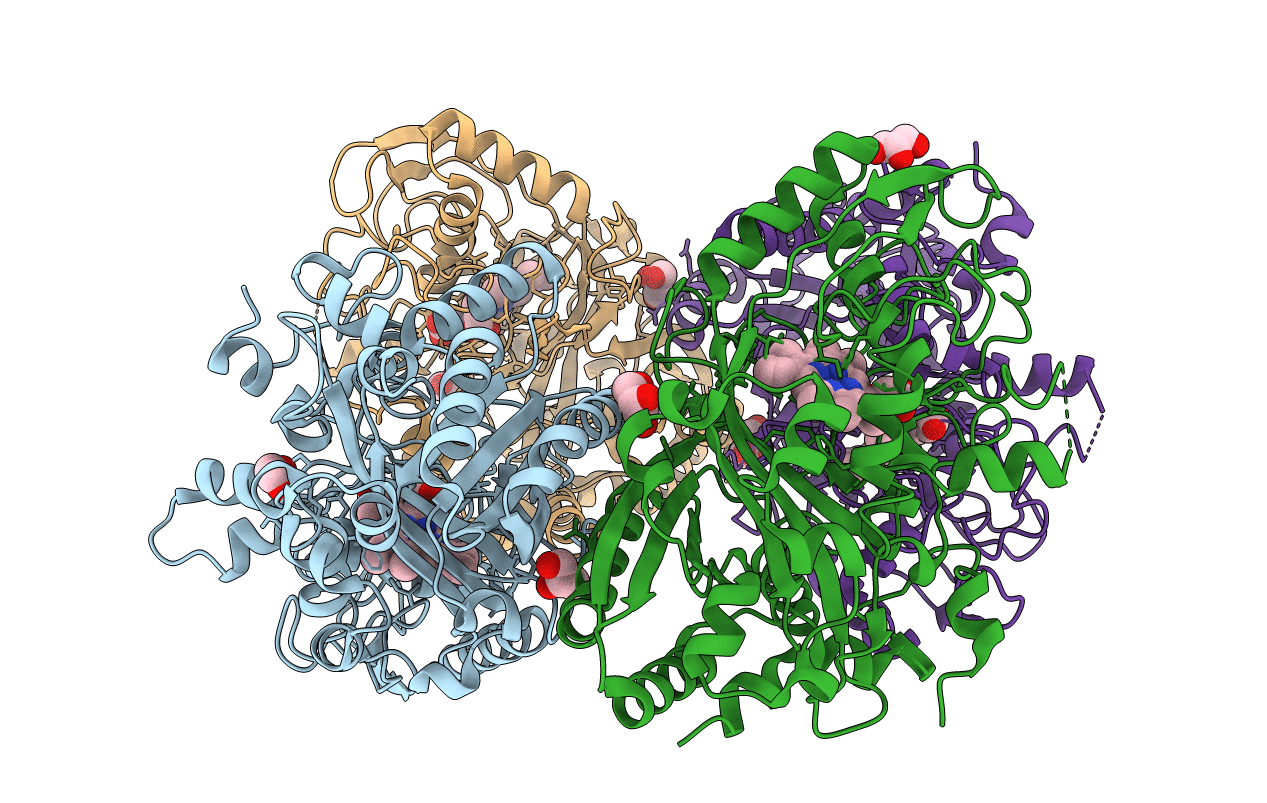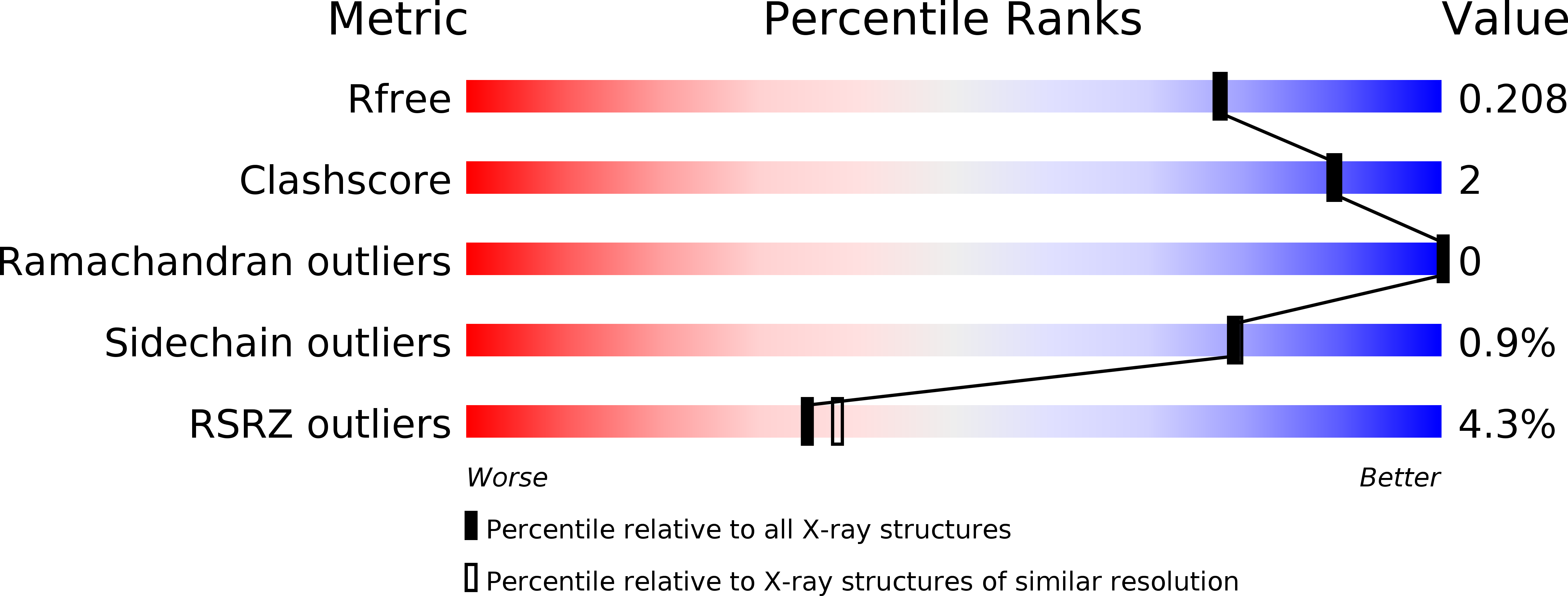
Deposition Date
2015-06-16
Release Date
2015-12-16
Last Version Date
2024-11-13
Entry Detail
PDB ID:
5C2I
Keywords:
Title:
Crystal structure of Anabaena sp. DyP-type peroxidese (AnaPX)
Biological Source:
Source Organism:
Nostoc sp. (strain PCC 7120 / UTEX 2576) (Taxon ID: 103690)
Host Organism:
Method Details:
Experimental Method:
Resolution:
1.89 Å
R-Value Free:
0.19
R-Value Work:
0.18
R-Value Observed:
0.18
Space Group:
P 21 21 21


